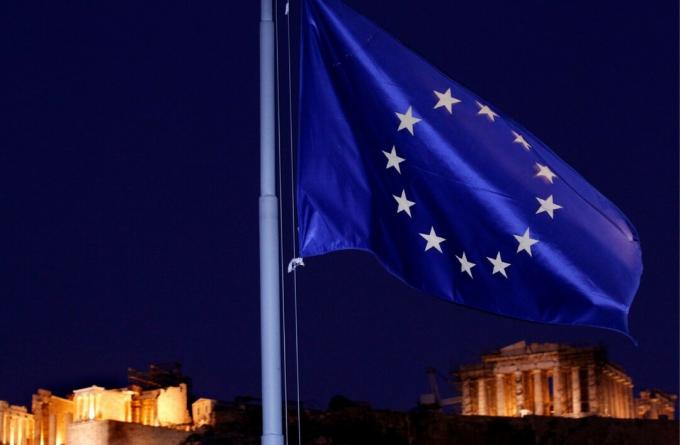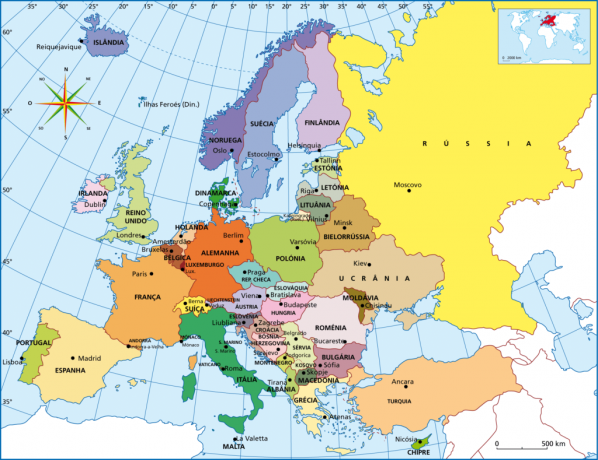O Mercosur is the acronym for Southern Common Market, an economic bloc currently composed of four South American countries, created on March 26, 1991.
There are five countries that make up Mercosur: Argentina, Brazil, Paraguay, Uruguay and Venezuela. The latter, however, is temporarily suspended from the block.
Mercosur Characteristics
Mercosur countries
Currently, Mercosur is composed of States Parties, which have voice and vote; and Associated States, which only participate in the discussions, but have no decision-making power.
There are five States Parties:
- Brazil
- Argentina
- Paraguay
- Uruguay
- Venezuela
Associated States are:
- Chile (since 1996),
- Peru (since 2003),
- Colombia
- Ecuador (since 2004)
- Guyana
- Suriname (since 2013).
Paraguay, a member since the creation of Mercosur, was suspended from the bloc's temporary form due to the deposition of former president Fernando Lugo in June 2012. It should be said that Paraguay was only suspended from the political agreements, as the economic ones remained in force. However, in 2013 it was reincorporated to the institution.
Venezuela, which joined the bloc in 2012, was suspended in 2017. This is because the country was not fulfilling the outlined objectives, especially those related to democracy and human rights.
Bolivia took another step towards its effective incorporation to the bloc in 2015, when it signed an Adhesion Protocol to Mercosur.
Mercosur's objective
Mercosur's objective is to promote the integration of South American countries, especially those of the Southern Cone, in the economic, political and social spheres. Likewise, it wants to preserve democracy in the countries of the South American continent.
The main requirement to enter Mercosur is to have a democratic government. Countries that do not comply with this rule are temporarily or permanently suspended from the bloc, as happened with Paraguay (2012) and Venezuela (2017).
Mercosur also promotes the integration of South American peoples through exhibitions and art biennials.
Mercosur Day is celebrated annually on March 26 and each year there is a theme around the common market.
Mercosur Organization
Starting from the "Ouro Preto Protocol", signed on December 17, 1994, Mercosur has an institutional structure composed of:
- Common Market Council (CMC): the instrument in charge of political direction in the integration process. The presidency of this Council is held on a rotating basis, every six months, by each of the States Parties.
- Common Market Group (GMC): this is a group with decision-making power to set work programs and negotiate agreements with third parties on behalf of Mercosur.
- Mercosur Trade Commission (CCM): assists the GMC in preparing the bloc's trade policy.
- Joint Parliamentary Committee (CPC): has an advisory, deliberative and formulation of Declarations, Provisions and Recommendations character. It has up to 64 parliamentarians.
- Economic and Social Consultative Forum (FCES): consultation body that appears among the sectors of the economy and society, expressing itself through nominations to the GMC.
- Mercosur Secretariat (SM): with permanent status based in Montevideo, Uruguay.
- Mercosur Structural Convergence Fund (FOCEM): intended to finance programs to promote structural convergence.
- Olivos Protocol: for the Settlement of Disputes between States Parties. From the admission of this Protocol, the Permanent Review Court was established in order to guarantee the correct interpretation, application and compliance with the Block's normative set.
- Mercosur Social Institute: with the purpose of subsidizing the formulation of social policies at the regional level.
- The Mercosur structure also has specific bodies for resolving disputes, such as the Ad hoc Courts and the Permanent Review Court.
Mercosur's motto, headquarters and languages
Mercosur's official motto is "our north is the south" and its headquarters are located in Montevideo, Uruguay.
The official languages are Portuguese, Spanish and Guarani.
Mercosur Economy
Currently, Mercosur countries have a population of approximately 311 million inhabitants and a GDP of 2 trillion dollars.
Since its creation, trade between member countries has increased 20 times. 2016 data reveals that Mercosur is the world's largest net sugar exporter; the world's largest exporter of soybeans and the 1st producer and 2nd largest exporter of beef in the world.
Mercosur History
Although it was only created in 1991, the principles for creating a free trade and circulation area in South America date back to the 1980s.
Fresh out of the military dictatorship, Brazil and Argentina sign the "Integration, Cooperation and Development Treaty", in 1988, in order to inaugurate a new milestone in the international relations of both countries.

This treaty aimed to establish a common market in South America, to which other Latin American countries could be linked. In this way, the presidents of Uruguay and Paraguay joined the initiative.
Later, the block would be made official on March 26 in 1991, after the signing of the "Asuncion Treaty" in Paraguay.
Objectives of the Treaty of Asuncion
The purpose of Asuncion Treaty it is the connection of States Parties through the free movement of goods, services, as well as the assignment of a Common External Tariff (TEC).
This will culminate in the adoption of a common trade policy. In other words, an intra-zone free trade area and common trade policy between these four South American countries.
Read more about some related topics:
- globalization
- Geopolitics
- Andean America
- What are economic blocks?



